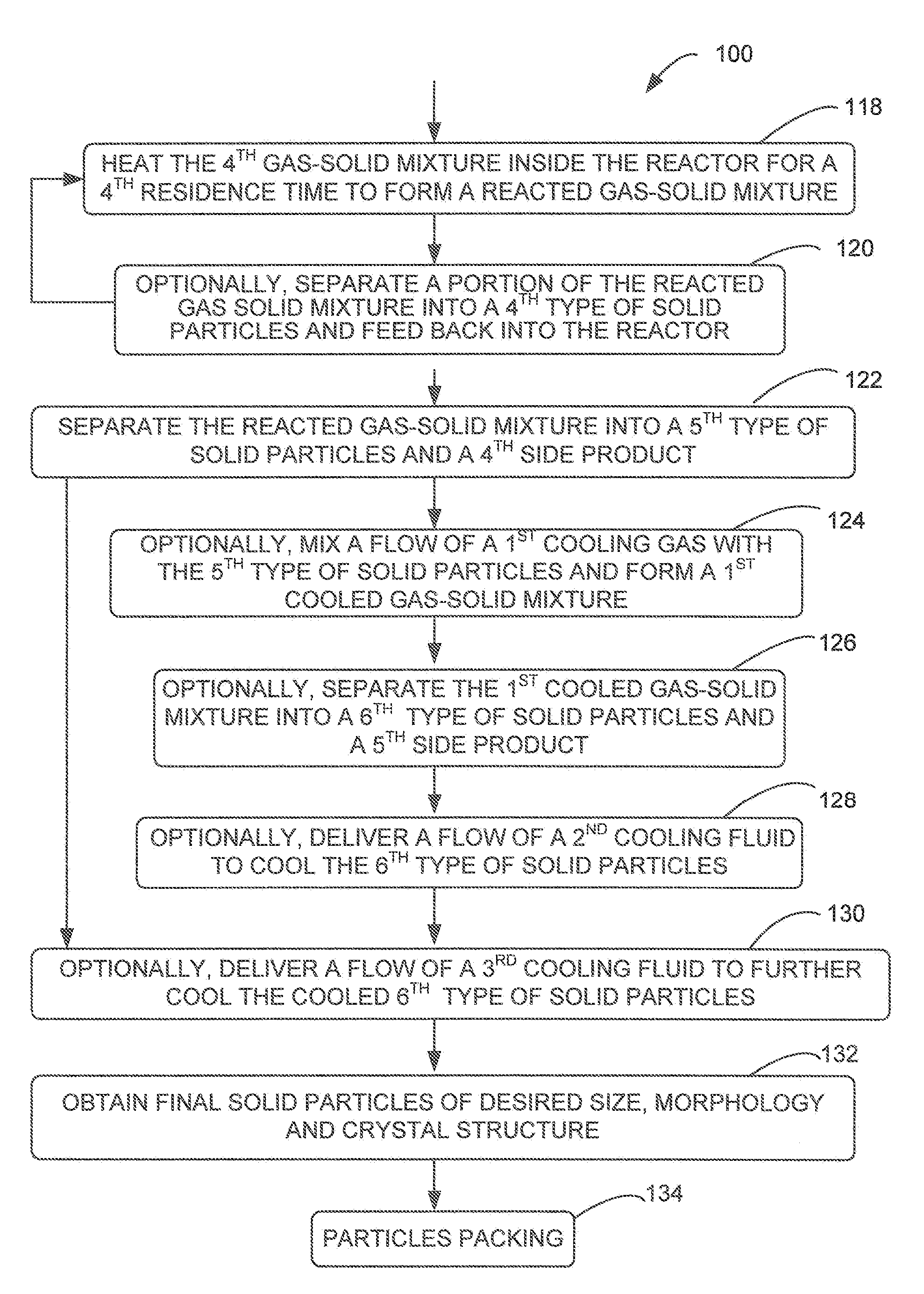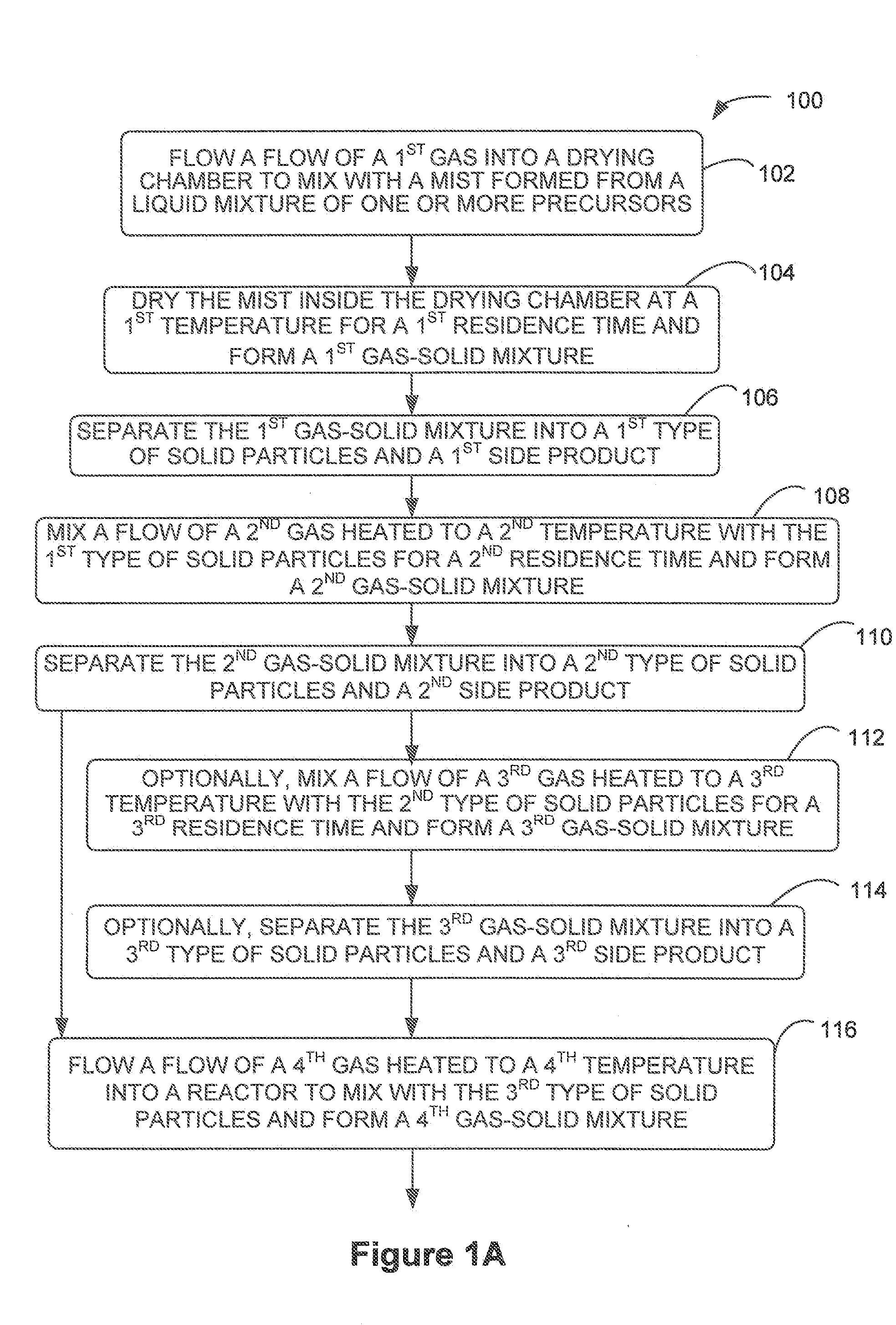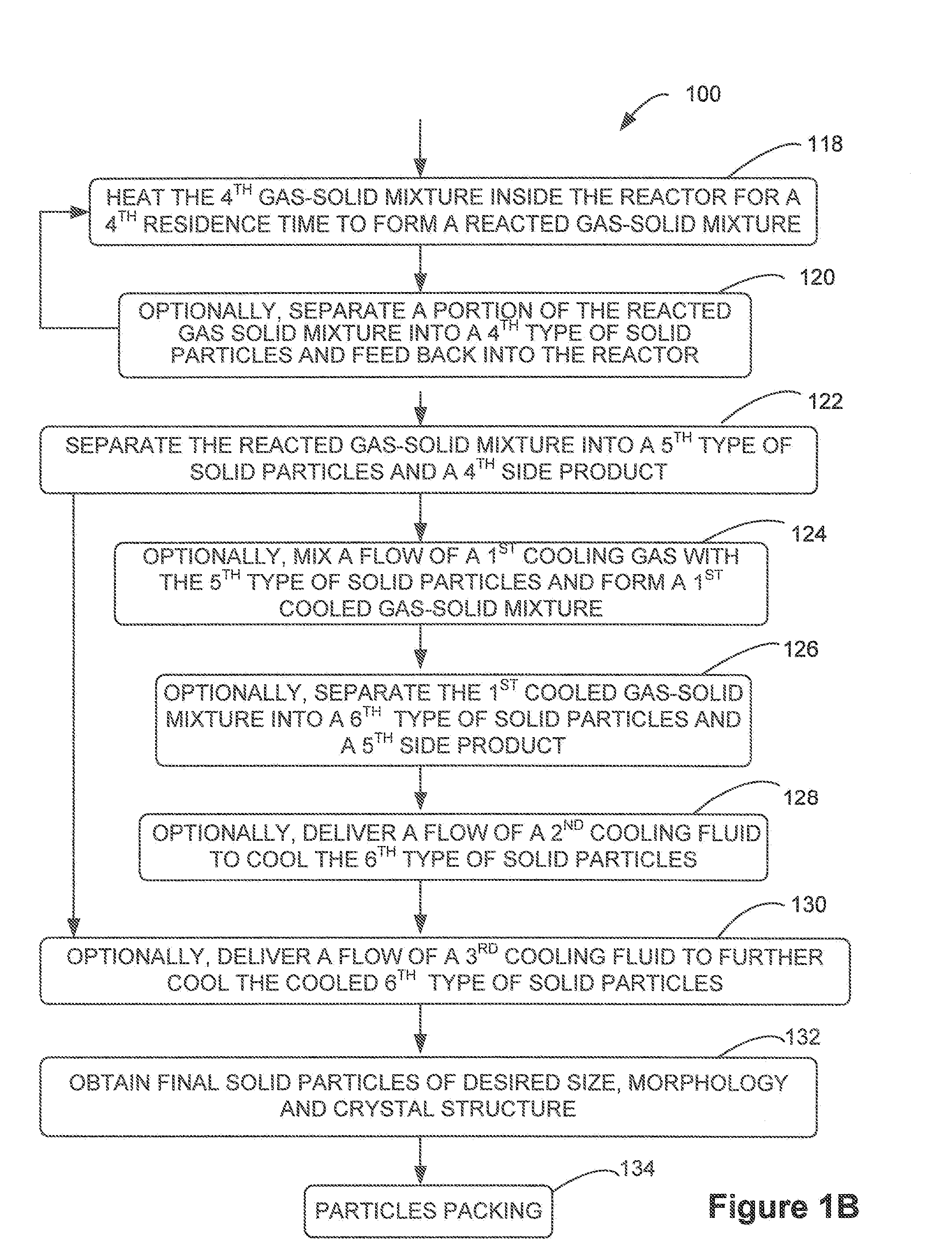Multi-Stage System for Producing a Material of a Battery Cell
a battery cell and material technology, applied in sustainable manufacturing/processing, gas-gas reaction processes, furnaces, etc., can solve the problems of high cost of commercially manufacturing various lithium battery materials, poor battery cycle life of materials, and high cost of cobalt, etc., to achieve the effect of lowering the temperature of final reaction product particles
- Summary
- Abstract
- Description
- Claims
- Application Information
AI Technical Summary
Benefits of technology
Problems solved by technology
Method used
Image
Examples
Embodiment Construction
[0051]The present invention generally provides a multi-stage in-line processing system and a method thereof for producing a material of a battery cell. The processing system generally includes a first-stage processing module, one or more second-stage reaction modules, a third-stage reaction module, and a fourth-stage cooling module. Solid precursors are continuously delivered into the processing system and processed, through various plenums of the in-line processing and reaction modules, into final reaction particles.
[0052]For example, the processing system may include a mist generator, a drying chamber, one or more gas-solid separators, one or more gas-solid feeders, a reactor, and one or more cooling mechanisms. Various gas-solid mixtures are formed within the internal plenums of the drying chamber, the one or more gas-solid feeders, and the reactor. In addition, heated air or gas is served as the energy source for any reactions inside the drying chamber, the gas-solid feeders, an...
PUM
| Property | Measurement | Unit |
|---|---|---|
| temperature | aaaaa | aaaaa |
| temperature | aaaaa | aaaaa |
| reaction temperature | aaaaa | aaaaa |
Abstract
Description
Claims
Application Information
 Login to View More
Login to View More - R&D
- Intellectual Property
- Life Sciences
- Materials
- Tech Scout
- Unparalleled Data Quality
- Higher Quality Content
- 60% Fewer Hallucinations
Browse by: Latest US Patents, China's latest patents, Technical Efficacy Thesaurus, Application Domain, Technology Topic, Popular Technical Reports.
© 2025 PatSnap. All rights reserved.Legal|Privacy policy|Modern Slavery Act Transparency Statement|Sitemap|About US| Contact US: help@patsnap.com



